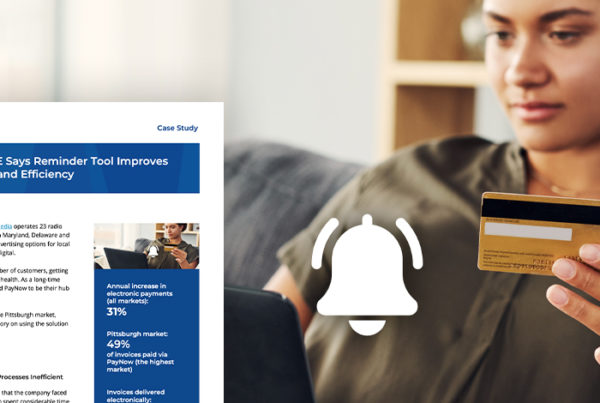The local ad industry will reap billions and billions in political advertising buys. As with previous election cycles, the channel benefiting the most is TV. OTT/CTV is also becoming a frontrunner, but radio’s projected grab will be much less, and that simply doesn’t align with the valuable reach that radio political advertising brings.
Radio is the leading mass media for reach in the U.S., outperforming TV for the first time. Radio’s reach is 84% versus 72% for TV. It also reaches 40% more people ages 18 to 49 than TV.
Local media sellers should be hailing this win and making it front and center when talking to political ad buyers. Here are more facts about the power of radio that can help you receive a larger allocation of their budgets.
Broadcast TV Viewership Declines; Radio Tops Ad-Supported Audio
Regular headlines tell us that many consumers are firmly in the camp of being cord-cutters. They no longer subscribe to cable or satellite. Instead, they are leaving in droves for ad-supported streaming. This migration makes the case for political OTT/CTV ads, which you can deliver by selling third-party digital.
Most political candidates, campaigns and PACs (political action committees) may be unaware that they won’t get the reach they expect by sticking with their traditional strategies. The reality is that radio is where they will engage a mass audience most effectively.
L2 voter and Nielsen Impact Media data revealed that AM/FM fills the gap of connecting with a broad audience. Their research also established that radio has an edge in creating trust and personal connections with voters.
While OTT/CTV will help reach cord-cutters, campaigns just channeling money from broadcast TV to streaming won’t achieve the incremental lift they need. It does some good, but when campaigns shift 20% of dollars to radio, the incremental reach is substantial. It adds over 14 points of incremental reach. Overall, radio increased reach by 12% without impacting the budget, and radio was able to reach 23% more unaffiliated voters.
Audio Ads Get More Attention and Generate Better Recall
Yes, radio wins here. According to research, audio ads outperform video in terms of attention and recall. That’s a huge deal because political advertising for candidate support relies heavily on recall. Radio achieves this because of how people consume the content. Audio listeners tend to be more attentive. They also have more favorable responses to this format, believing it to be less invasive.
The Radio Trust Factor
Many people are on guard regarding political advertising. As noted in the study above and many others, radio is the most trusted form of media. So, people may take what they hear on the radio as more reliable.
It can also invoke emotions, which help people overcome fear and mistrust. A study from James Madison University confirmed this hypothesis. The research was not related to political ads, but it’s not a stretch to think the same results could occur with this sensitive topic.
Every candidate longs to gain trust, and being on the radio may provide an avenue to do so at scale.
Radio Gets Swing Voters to the Polls
Another research study on radio and swing voters is an additional piece to add to your pitch. The findings revealed that radio political advertising performs better with this segment. AM/FM radio is able to connect with 82% of swing voters. This group will be critical in the 2024 election.
Every Market Has Political Revenue Opportunities
One concern some areas have regarding political boosting their spot ad revenue is whether it’s competitive. Some markets are very red or blue, so the activity for voting and swaying may be low. However, you could see a lot of activity around fundraising, which every candidate depends on.
Also, there may be district and state ballot initiatives that PACs or other groups will put money toward. Those that are issue-driven may create more spot ad demand.
The Radio Political Advertising Seller Checklist
You’ve got some great data demonstrating radio’s reach, engagement and trust to share with political ad buyers. Keep in mind that you must comply with the Federal Communications Commission’s rules about rates for “legally qualified candidates,” but these don’t apply to PACs. This limitation does impact your revenue, but you can make that up with political digital ads. As you have conversations with these advertisers, follow this checklist:
- Be more active and aggressive in positioning radio. You don’t have to tell media buyers they’re “wrong” for sinking so much in TV, but you can reiterate the benefits of diverse spending.
- Address misconceptions about radio, who listens to it, and how often people tune in from the start before they even bring it up as an objective.
- Build a complete advertising proposal with radio accounting for at least 20% of the budget. Then, recommend complementary tactics you can provide, including OTT/CTV and programmatic ads.
- Discuss the limitations of available inventory for broadcast TV. It’s finite and may already be gone, so you can be there to offer radio in its place.
- Illustrate what results look like by providing sample reporting that clearly defines spot and digital ad performance.
All Political Advertising Is Local — Radio Is the Anchor
All political advertising really is local, regardless of the race. The U.S. election system ensures that every state counts, and there will be many critical down-ballot races. Those will fuel a lot of radio revenue, according to BIA Advisory Services. Also, people are more aware of how important their local races are to their community.
Get more political advertising insights by visiting our toolbox, curated for local media sellers.






